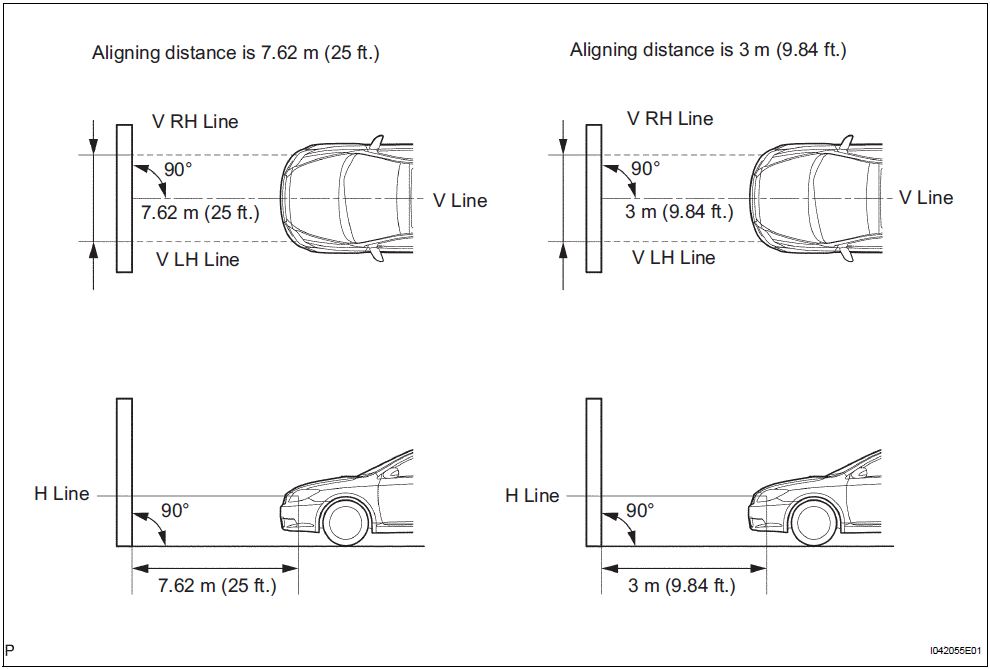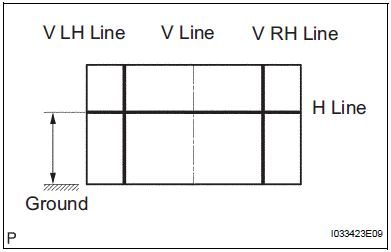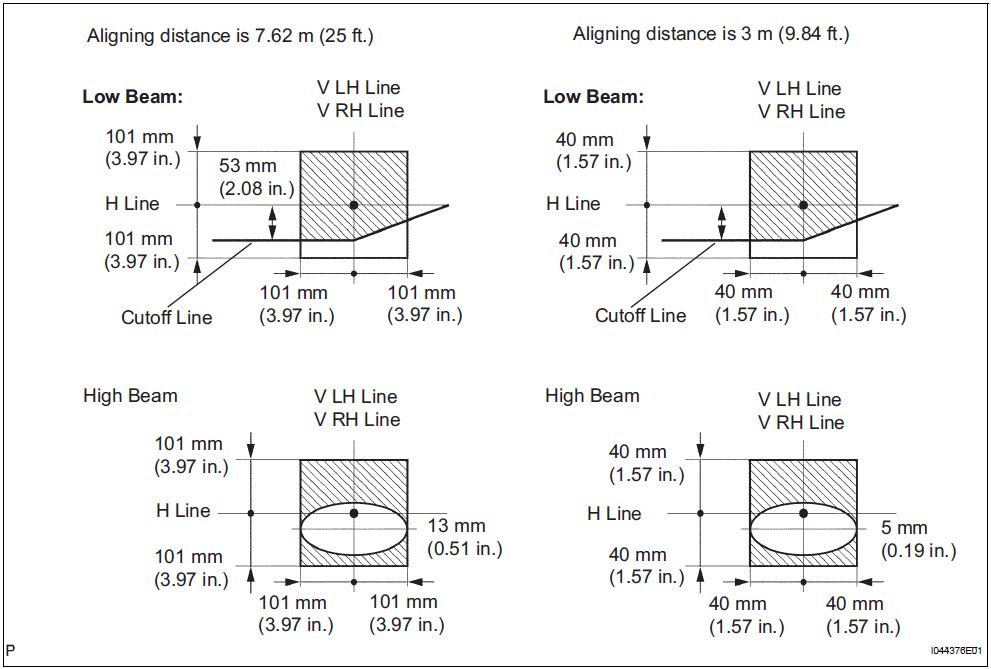Aiming Your Headlights
Not too many ask this question but we seem to remind a lot of people that they should re-aim their headlights after they install an LED or HID kit. Aiming your lights may seem like a difficult task, but is relatively simple once you understand how to do it. There are a few different resources that we have found useful online and they all follow the same procedure. We will cover this procedure shortly, but first we want to help you understand why this should be taken into consideration.
The first reason that we suggest re-aiming your lights is for safety. Properly adjusted headlights keep you from blinding oncoming traffic. The halogen bulbs you just replaced are about 1/3 as bright as the HID kit you just installed. Your lights may have been out of alignment before, but they were dimmer and it may have not been that noticeable. (if you had to remove your headlight housings during installation you will definitely need to adjust the height and direction of your headlights) But now that you have HIDs installed you are going to notice a difference, and so is everyone else on the road. Whether they were aimed down too low or up too high, properly aligning your headlights will maximize your investment and keep you safe.
Lets move on to the how. A Google search of “headlight adjustment” will bring up a ton of information. We have read through a lot of articles and they all point to the same measurements and distances for properly aligning your headlights. We have assembled what we think is a simple guide to do this. Important things to consider before starting this are: Is your gas tank full? Is your trunk (if it’s a car) or bed (if it’s a truck) full of heavy stuff?(groceries, golf clubs, bricks, wood, sandbags, water bottles etc) Are your tires aired up to the correct pressure? It sounds small but remember that if your car or truck is squatting in the front or rear while you align the lights, your lights will be pointing a different direction when you unload this stuff!
The Following guide is for reference only. We are not citing any DOT laws or claiming that this guide abides by any laws that pertain to your local State or Province. We are simply helping you help us, as we find ourselves continually blinded by headlights that are aimed incorrectly.
This first illustration shows 2 different distances that you can work with. Choose one of these distances for your car to be from a flat vertical surface (a wall). The diagram on the left is the optimal distance for this procedure. If you do not have that much space to work with you can use the diagram on the right. Keep in mind that your car needs to be square to this surface and on a level area. You can use the side of a building or your garage door as long your car is on a level surface.

Lets start with measuring out the wall. You will need to use some masking tape to mark these measurements out on the wall. You will need to measure the distance from the ground to the center of the headlight assembly. This is your H Line. Use the masking tape to mark these measurements on the wall. Now locate and mark the center of your car on the wall. This is your V Line. Next measure the distance between the center of your car and the headlights. These are your V RH and V LH lines. Every car is different and these measurements must come from your specific car. When you are done with the measuring and taping your wall should end up with a pattern that looks like this illustration.

The dark lines represent the masking tape. The V stands for Vertical, the H stands for Horizontal and the RH and LH represent Left Hand Side and Right Hand Side.
Before we get to aiming your lights you will need to locate the adjustment screw. From my personal experience each cars headlight has a different style of adjuster screw. If you are having a tough time locating your cars adjustment screw consult your vehicle manual. There should be 2 adjustments per headlight. One is for vertical (up and down) adjustments and the other is for horizontal (side to side) adjustments.

Now its time to turn on your lights. Aim your lights one at a time so there is no interference from the other headlight. (you can disconnect the 12 volt power supply to the HID ballast that is not being aimed to turn it off) This illustration is split into the same 2 distances from before. This illustration has measurements listed as guidelines only. Every car is different and these measurements should be used as a reference point only. Not every car has a distinct cut off line like this illustration shows, but you should see something similar. Above the line should be dark, and it should be very bright underneath. Use the adjustment screws to align your lights as close to this as possible. Perform this for both sides of the car and you’re done. Now its time for the test. When it gets dark go for a drive. How are your lights? Are they too low, or too high now? Can you see better? Are people still flashing their lights at you? From here you can make minor tweaks to the adjustments to dial it in perfectly. This illustration shows measurements for high beams as well. Depending on your car you may be able to adjust them separately from the low beams. If your car has separate adjustments than you can adjust your high beams too. All you have to do is add additional V LH and V RH lines for them and adjust them according to the diagram as well.
The main point to focus on while aiming your lights is to keep them pointed no higher then the headlight assemblies. If your car is lowered your lights won’t reach as far. Remember if you aim them up just a little bit it may be fine at 100 ft. but at 1000 ft. they may be pointing at the tops of trees. If you you have a lifted truck you may need to aim them down a bit to keep from blinding people too. Just keep that in mind and everyone driving towards you will be happy.
On another note, remember what each set of your lights are for. Your low beams are you main source of light. They are designed to illuminate the ground in front of your car and shouldn’t cast light out too far. Your high beam lights allow you to see beyond the reach of your low beams. And fog lights are designed to illuminate the sides of the road and just in front of your car. Think of them as tools to help you see. You wouldn’t use a hammer to drive in a screw would you? Or a screwdriver to drive in a nail? So don’t use your fog lights as low beams, or your low beams as high beams, or your high beams as searchlights. Use the correct tool for the job!

